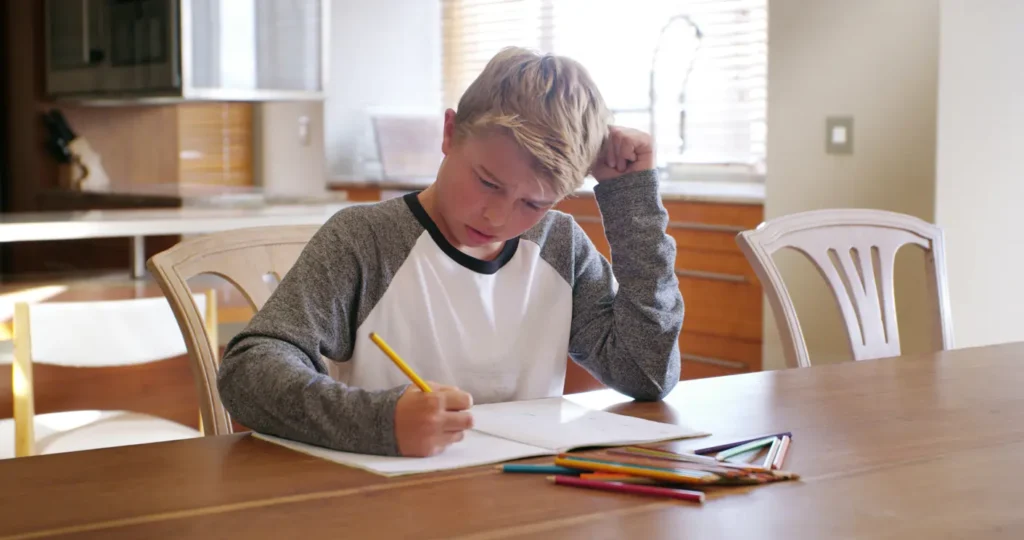
Story At-A-Glance
- ADD is outdated terminology – Medical professionals now use ADHD (Attention-Deficit/Hyperactivity Disorder) for all attention-related challenges, with three different presentations rather than separate conditions.
- Three types exist – ADHD comes in predominantly inattentive (the old “ADD”), predominantly hyperactive-impulsive, and combined types, each with distinct characteristics and challenges.
- Different presentations, same condition – While hyperactive kids might bounce off walls, inattentive kids often seem like daydreamers struggling with focus and organization, but both stem from similar brain differences.
- Hope and support matter most – With proper understanding and support, children with any type of ADHD can absolutely thrive and reach their full potential.
If you’re a parent trying to understand whether your child has ADD or ADHD, you’re probably feeling a bit overwhelmed by all the conflicting information out there. The good news is that once you understand the basics, it all starts to make much more sense. Let’s break down what these terms really mean and how they might apply to your child.
The Name Game: Why ADD Became ADHD
First things first – ADD isn’t actually a separate condition from ADHD anymore. Back in the 1980s, doctors used the term ADD (Attention Deficit Disorder) to describe kids who had trouble paying attention but weren’t necessarily hyperactive. Meanwhile, ADHD (Attention-Deficit/Hyperactivity Disorder) was used for kids who were both inattentive and hyperactive.
But here’s where it gets interesting: researchers discovered that attention problems and hyperactivity issues often come from the same underlying brain differences. So in 1994, the medical community decided to simplify things by putting everything under one umbrella term – ADHD. Now, instead of having two separate conditions, we have one condition with three different presentations.
Think of it like this: ADHD is like a big tent, and under that tent are three different types of experiences your child might have. Some people still use the term ADD informally, especially when talking about kids who seem more dreamy and distracted than bouncy and impulsive, but officially, it’s all ADHD now.
The Three Faces of ADHD
Understanding the three types of ADHD can help you better recognize what your child might be experiencing:
ADHD Predominantly Inattentive Type (What People Used to Call ADD)
This is probably what most people think of when they hear “ADD.” Kids with this type often seem like they’re in their own world. They might stare out the window during conversations, lose their homework constantly, or start projects but never finish them. These children aren’t trying to be difficult – their brains just work differently when it comes to focusing and staying organized.
You might notice your child struggles with things like following multi-step directions, keeping track of their belongings, or paying attention to details. They’re often described as forgetful, disorganized, or “spacey.” The tricky thing is that these kids can actually focus really well on things that interest them – they might spend hours building with Legos or reading about dinosaurs – but struggle to pay attention during less engaging activities.
ADHD Predominantly Hyperactive-Impulsive Type
These are the kids who seem to have endless energy. They might fidget constantly, have trouble sitting still, talk nonstop, or act without thinking about consequences. If your child is always climbing on furniture, interrupting conversations, or seems to be in perpetual motion, this might sound familiar.
Kids with this type often struggle with impulse control. They might blurt out answers before questions are finished, have trouble waiting their turn, or make decisions without thinking them through. It’s important to understand that they’re not being defiant or rude on purpose – their brains just process things differently, making it harder to pause and think before acting.
ADHD Combined Type
This is exactly what it sounds like – kids who show significant symptoms of both inattention and hyperactivity-impulsivity. They might lose focus easily AND have trouble sitting still. This is actually the most common type of ADHD, affecting about 70% of people diagnosed with the condition.
What's Really Going On in the ADHD Brain?
To understand your child better, it helps to know a bit about what’s happening upstairs. Research shows that ADHD brains work differently in several key areas, particularly in regions responsible for executive function – think of this as your brain’s CEO that helps with planning, organization, impulse control, and attention.
In ADHD brains, certain neurotransmitters (brain chemicals) like dopamine and norepinephrine don’t work quite as efficiently. These chemicals are crucial for motivation, attention, and reward processing. This is why your child might struggle to start boring tasks but can hyperfocus on video games or other highly stimulating activities – their brain is essentially seeking the right amount of stimulation to function optimally.
It’s also worth noting that ADHD brains often develop differently. Some areas, particularly those involved in executive function, may develop more slowly than in typically developing children. This doesn’t mean your child is behind permanently – it just means they might need different strategies and more time to develop certain skills.
Recognizing the Signs in Your Child
Every child is different, but there are some common patterns that might indicate ADHD. For inattentive symptoms, you might notice your child frequently loses things, seems not to listen when spoken to directly, avoids tasks that require sustained mental effort, or is easily distracted by unrelated thoughts or activities.
For hyperactive-impulsive symptoms, look for patterns like difficulty staying seated when expected to, excessive talking, trouble engaging in quiet activities, frequent interrupting or intruding on others, or seeming to be “driven by a motor.”
Remember, all kids show these behaviors sometimes – that’s completely normal. The key difference with ADHD is that these behaviors are persistent, occur across multiple settings (home, school, social situations), and significantly interfere with your child’s ability to function in daily life.
The Gender Factor
It’s worth mentioning that ADHD can look different in boys and girls. Boys are more likely to display hyperactive and disruptive behaviors that get noticed quickly. Girls, on the other hand, are more likely to have the inattentive type and might be overlooked because they’re not causing classroom disruptions. They might be seen as shy, dreamy, or just not applying themselves academically.
This difference in presentation has led to many girls being diagnosed later than boys, sometimes not until adulthood. If you have a daughter who seems to struggle with organization, daydreaming, or anxiety, it might be worth exploring whether inattentive ADHD could be a factor.
Moving Forward: What This Means for Your Family
Understanding whether your child fits the inattentive, hyperactive-impulsive, or combined presentation of ADHD is more than just getting the right label – it’s about understanding how their unique brain works so you can support them better.
If your child shows signs of ADHD, the first step is typically a comprehensive evaluation by a qualified professional. This might include a pediatrician, child psychologist, or psychiatrist who specializes in ADHD. They’ll look at your child’s behavior across different settings and may use standardized rating scales, interviews, and observations to make a diagnosis.
Remember that ADHD is a neurodevelopmental difference, not a character flaw or parenting failure. Children with ADHD often have wonderful qualities like creativity, enthusiasm, spontaneity, and the ability to hyperfocus on their interests. The goal isn’t to “fix” your child but to help them develop strategies to work with their brain, not against it.
The Bottom Line
Whether you’re hearing ADD or ADHD, remember that these terms are describing the same underlying condition – just different presentations of how attention and activity levels can be affected. Your child isn’t broken or deficient; they just have a brain that works differently and may need different approaches to thrive.
The most important thing you can do as a parent is to approach your child with understanding, patience, and curiosity. Learn about how their brain works, celebrate their strengths, and work together to develop strategies that help them succeed. With the right support and understanding, children with ADHD can absolutely flourish and reach their full potential.
Every child deserves to feel understood and supported for who they are. By taking the time to understand ADHD and its different presentations, you’re already taking an important step in that direction.
Sources
- American Psychiatric Association. (2013). Diagnostic and Statistical Manual of Mental Disorders (5th ed.). American Psychiatric Publishing.
- Barkley, R. A. (2015). Attention-Deficit Hyperactivity Disorder: A Handbook for Diagnosis and Treatment (4th ed.). Guilford Publications.
- Centers for Disease Control and Prevention. (2022). “What is ADHD?” Retrieved from https://www.cdc.gov/ncbddd/adhd/facts.html
- National Institute of Mental Health. (2021). “Attention-Deficit/Hyperactivity Disorder.” Retrieved from https://www.nimh.nih.gov/health/topics/attention-deficit-hyperactivity-disorder-adhd
- Quinn, P. O., & Madhoo, M. (2014). A review of attention-deficit/hyperactivity disorder in women and girls. The Primary Care Companion for CNS Disorders, 16(3).
Note: This blog post is intended for educational purposes only. While the information presented is based on scientific research, individual situations vary. Please consult with qualified professionals for proper assessment and individualized recommendations.



